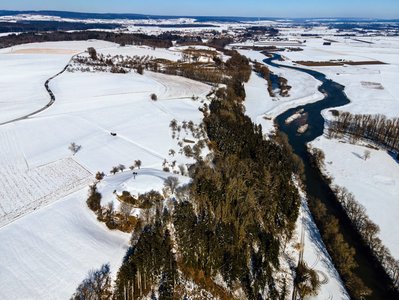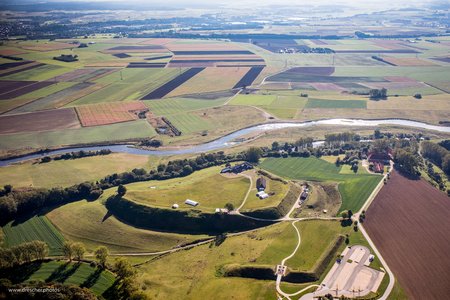The upper Danube
The region along the upper Danube is a cultural landscape that has developed over many centuries. In some places in the breakthrough valley of the Swabian Alb, the Danube plunges as low as 200m deep into the White Jurassic limestone, before flowing northeast along the southeastern flank of the Swabian Alb. The Danube is the main watercourse for the Swabian Alb, which in any case has very little water, and thus it has always been the "backbone" of the region.
Cultural Landscapes of the upper Danube
Despite its generally harsh climate, with average temperatures ranging from 5.8°C on the High Swabian Alb to 6.8°C in the upper Danube Valley natural area, as well as 7.0°C on the Danube Ablach Plateau, the upper Danube is characterized by its biodiversity. More than 1,000 plant species inhabit this landscape. Many bird species can be found on the rocks and landslide slopes of the Danube valley, as well as the side valleys and the Albtrauf. Some of these species can only be found in the Alb region. In the mid-1990s, 101 bird and 41 butterfly species could still be counted in the region. Although the re-naturation of the Danube - situated at the foot of the Heuneburg - has progressed in recent years, assisted by the reintroduction of formerly extinct wild animals such as beaver and lynx, and the succesful return of migrating wolves, the effects of climate change are becoming increasingly apparent. Damage due to rising average temperatures and falling groundwater levels is evident not only in the flora and fauna, but also in the archaeological record. Organic finds preserved in wetland soil, such as wood, are threatened with drying out and thus decaying, and are becoming irretrievably lost to archaeology.
Thus, alongside the protection of species and the preservation of the historical cultural landscape, with its woods, hay and scattered fruit meadows and pastures, the protection of monuments is one of the most important tasks of the counties and administrative districts.
Geology
The geology of the upper Danube is characterized by the limestones and marls of the Jurassic period, as well as the molasse and old moraine landscapes of the Tertiary period. During the Jurassic period, 195 to 140 million years ago, marine deposits formed the very distinctive strata of the Albtrauf. Three strata can be traced in the Upper Danube Nature Park, with the Black Jurassic (Lias) and the Brown Jurassic (Dogger) occurring only in small areas. Most of the landscape is characterized by the White Jurassic (Malm) of the uppermost rock group.
The partly layered, partly massive, limestones and calcareous marls can be up to 600m thick and make the Swabian Alb one of the largest karst areas in Germany. Typical for this landscape are caves, which were already being visited by humans during the Ice Age, as well as sinkholes and dry valleys, such as the Lone Valley. One of the geological highlights of the upper Danube is the Danube sinkhole. Over a length of approx. 12 km, the Danube seeps into the fissure-rich White Jurassic geology here, and continues to flow slowly in an underground cave system before resurfacing after approximately 60 hours.
South of the Danube river, in the south and southeast of the Danube lowlands, a molasse and old moraine landscape exists. These 65 to 1.5 million year old deposits in the White Jurassic geology partly indicate the course of the primordial Danube on the present Alb plateau. On the Alb, north of the Danube, traces of the Molasse Sea from the younger Tertiary and its cliffs formed by surf can still be seen today. In the Pleistocene, the molasse deposits were largely covered.
While the Swabian Alb was not covered by glaciers in the Pleistocene, glaciers pushed across the Danube as far as Sigmaringen during the penultimate Riss Ice Age. The Rissian ground moraine left behind gravelly and clayey boulder clay, at the Danube valley margins as well as fluvioglacial gravels.



